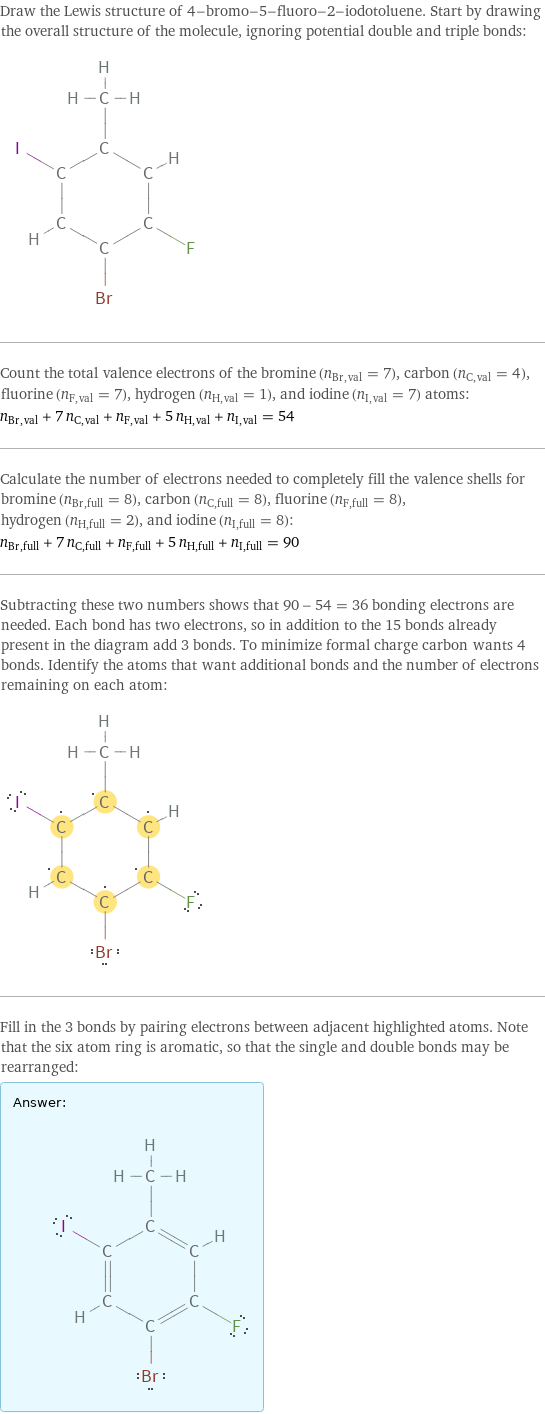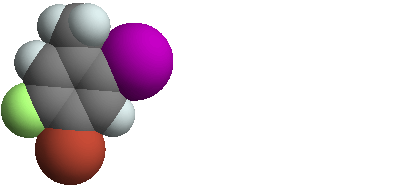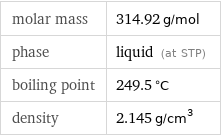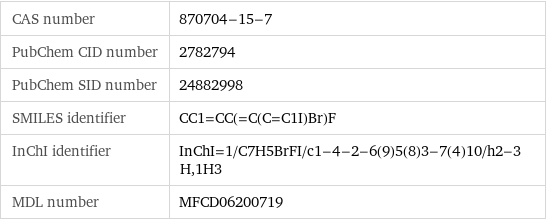Input interpretation

4-bromo-5-fluoro-2-iodotoluene
Chemical names and formulas

formula | C_7H_5BrFI name | 4-bromo-5-fluoro-2-iodotoluene IUPAC name | 1-bromo-2-fluoro-5-iodo-4-methylbenzene alternate names | 1-bromo-2-fluoro-5-iodo-4-methyl-benzene | 1-bromo-2-fluoro-5-iodo-4-methylbenzene mass fractions | Br (bromine) 25.4% | C (carbon) 26.7% | F (fluorine) 6.03% | H (hydrogen) 1.6% | I (iodine) 40.3%
Lewis structure

Draw the Lewis structure of 4-bromo-5-fluoro-2-iodotoluene. Start by drawing the overall structure of the molecule, ignoring potential double and triple bonds: Count the total valence electrons of the bromine (n_Br, val = 7), carbon (n_C, val = 4), fluorine (n_F, val = 7), hydrogen (n_H, val = 1), and iodine (n_I, val = 7) atoms: n_Br, val + 7 n_C, val + n_F, val + 5 n_H, val + n_I, val = 54 Calculate the number of electrons needed to completely fill the valence shells for bromine (n_Br, full = 8), carbon (n_C, full = 8), fluorine (n_F, full = 8), hydrogen (n_H, full = 2), and iodine (n_I, full = 8): n_Br, full + 7 n_C, full + n_F, full + 5 n_H, full + n_I, full = 90 Subtracting these two numbers shows that 90 - 54 = 36 bonding electrons are needed. Each bond has two electrons, so in addition to the 15 bonds already present in the diagram add 3 bonds. To minimize formal charge carbon wants 4 bonds. Identify the atoms that want additional bonds and the number of electrons remaining on each atom: Fill in the 3 bonds by pairing electrons between adjacent highlighted atoms. Note that the six atom ring is aromatic, so that the single and double bonds may be rearranged: Answer: | |
3D structure

3D structure
Basic properties

molar mass | 314.92 g/mol phase | liquid (at STP) boiling point | 249.5 °C density | 2.145 g/cm^3
Units

Liquid properties (at STP)

density | 2.145 g/cm^3 refractive index | 1.624
Units

Chemical identifiers

CAS number | 870704-15-7 PubChem CID number | 2782794 PubChem SID number | 24882998 SMILES identifier | CC1=CC(=C(C=C1I)Br)F InChI identifier | InChI=1/C7H5BrFI/c1-4-2-6(9)5(8)3-7(4)10/h2-3H, 1H3 MDL number | MFCD06200719
Safety properties

flash point | 110 °C